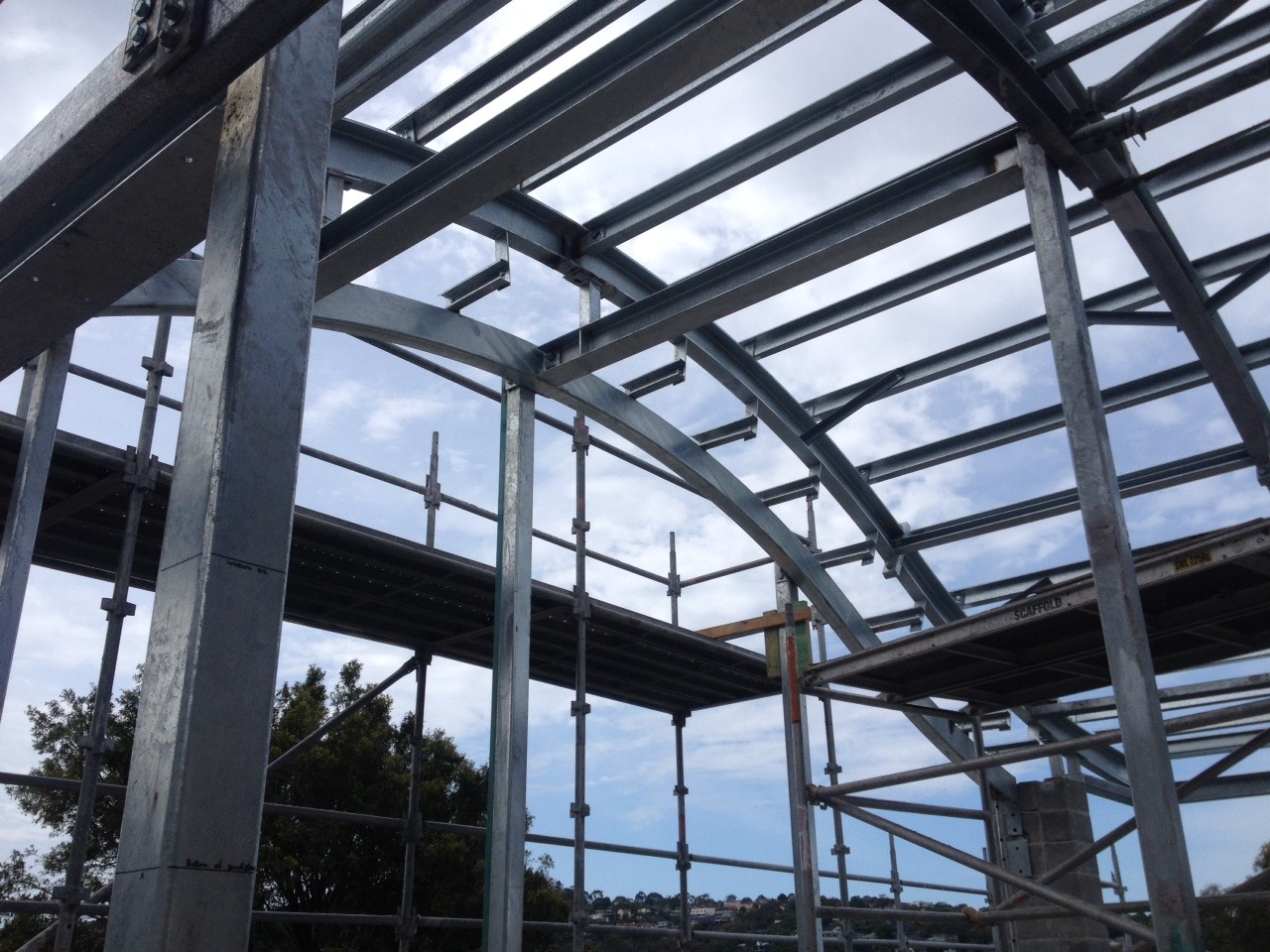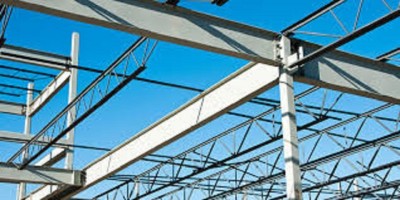Metal Fabrication Melbourne: Precision Design for All Requirements
Metal Fabrication Melbourne: Precision Design for All Requirements
Blog Article
Comprehensive Evaluation of Cutting-Edge Techniques in Steel Construction Market
As the steel manufacture market remains to evolve, the assimilation of cutting-edge techniques has actually come to be vital for staying affordable and satisfying the needs of modern manufacturing requirements. From laser cutting innovations to the application of robotics and 3D printing in steel manufacturing, the landscape of manufacture techniques is rapidly altering. With each advancement bringing its own set of difficulties and advantages, a detailed analysis of these techniques is extremely important for business aiming to improve their procedures, boost precision, and ultimately, raise the quality of their steel construction outcome. In this vibrant industry where modern technology plays a pivotal role, understanding the nuances of these advanced strategies is not simply an alternative yet a necessity for those aiming to forge in advance in the ever-evolving globe of steel manufacture.
Laser Cutting Innovations
In the world of steel fabrication, laser reducing improvements have changed the accuracy and efficiency of metal shaping processes. By utilizing the power of focused laser beams, suppliers can now attain unparalleled levels of accuracy when puncturing various types of steels. This modern technology enables complex styles to be implemented with minimal material waste, making it a cost-efficient service for industries requiring high precision parts.
One of the essential advantages of laser cutting is its capacity to handle a large range of materials, including stainless steel, light weight aluminum, and carbon steel, easily. The procedure produces tidy, burr-free edges, getting rid of the demand for additional finishing actions. The non-contact nature of laser cutting reduces the risk of product contamination, resulting in greater high quality end products.
Additionally, laser cutting devices can be programmed to make swift, exact cuts, significantly decreasing production time contrasted to standard reducing approaches. This speed and precision make laser reducing especially suitable for automation environments where performance is paramount. As modern technology continues to breakthrough, laser cutting is positioned to play a significantly crucial role in the steel construction market.

CNC Machining Innovations
The evolution of CNC machining modern technologies has actually introduced a new era of precision and effectiveness in the steel construction industry. Computer System Numerical Control (CNC) makers have actually changed steel manufacture by using unrivaled accuracy and repeatability in the manufacturing procedure. steel fabricators melbourne. Among the key advancements in CNC machining is the combination of sophisticated software application systems that enable real-time surveillance and changes, resulting in boosted productivity and high quality control
Additionally, the development of multi-axis CNC devices has enabled the fabrication of complex steel parts with intricate layouts that were formerly challenging to create. These devices can execute a wide variety of machining procedures, including milling, exploration, turning, and grinding, all with high degrees of precision.
Moreover, the unification of automation and robotics in CNC machining has structured manufacturing processes, decreased lead times, and minimized the margin of error. This assimilation of sophisticated innovations not just enhances efficiency but also makes certain regular quality across all fabricated steel parts. In conclusion, CNC machining advancements remain to drive developments in the steel construction sector, setting new requirements for accuracy and efficiency.
Automated Welding Technologies
Automated welding technologies have actually revolutionized the steel manufacture industry, enhancing efficiency and precision in the welding process. These sophisticated modern technologies make use of computer-controlled systems to automate the welding process, leading to higher efficiency degrees and enhanced weld high quality. Among the vital advantages of automated welding is the ability to perform complex welds with constant accuracy, decreasing the probability of mistakes and revamp.
Robotic welding systems go to the leading edge of automated welding innovations, offering unmatched speed and precision. These systems can manage a vast array of welding tasks, from straightforward to complex, with convenience (steel fabrication melbourne). By making use of advanced sensing units and software, robot welders can adapt to variations in product and joint geometry, making sure an uniform and dependable weld
Furthermore, automated welding modern technologies enhance office safety and security by lessening the direct exposure of human welders to harmful useful link fumes and intense warm. As the steel fabrication sector remains to develop, incorporating automated welding technologies will be vital for firms aiming to stay affordable and fulfill the growing demands for top quality bonded items.
Robotics Assimilation in Construction
Making use of robotic systems in fabrication procedures has actually ended up being a pivotal strategy for enhancing effectiveness and precision in modern production environments. Robotics combination in steel manufacture supplies a myriad of benefits, including boosted productivity, enhanced quality control, and enhanced safety and security steps. These sophisticated robotic systems are outfitted with sophisticated sensing units and programs capacities, enabling them to perform intricate jobs with a high level of accuracy and repeatability.
Among the key benefits of robotics assimilation in steel manufacture is the ability to automate repeated tasks, such as product handling, reducing, welding, and setting up processes. This not just speeds up production cycles but additionally reduces the danger of human mistake, bring about greater general product quality. Furthermore, robotics can run 24/7, significantly enhancing production result and meeting tight project target dates.

3D Printing in Steel Production
Having revolutionized the steel manufacture sector via robotics combination, the blossoming exploration of 3D printing in steel manufacturing is poised to further advance the realm of modern production strategies. 3D printing, additionally known as additive manufacturing, offers unprecedented layout freedom and intricacy, making it possible for the creation of elaborate steel structures that were previously unattainable through typical manufacturing methods. By utilizing computer-aided layout (CAD) software application, manufacturers can exactly manage the layer-by-layer deposition of steel product, resulting in parts with enhanced performances and geometries.
Among the crucial benefits of 3D printing in steel production is its ability to lower material waste dramatically. Unlike subtractive manufacturing procedures where excess material is cut away, 3D printing only utilizes the necessary amount of steel needed for the last part. This efficiency not just leads to set you back financial savings yet also lines up with lasting production methods by decreasing environmental influence.
Additionally, 3D printing allows fast prototyping and customization, permitting the manufacturing of tiny batches of complicated steel components with brief lead times. As the modern technology continues to develop and become a lot more obtainable, its combination right company website into mainstream steel manufacture procedures is expected to drive innovation and efficiency throughout the market.
Final Thought
In verdict, the steel manufacture market has seen significant improvements in methods such as laser cutting, CNC machining, automated welding, robotics integration, and 3D printing. These cutting-edge innovations have transformed the method steel products are produced, resulting in boosted accuracy, efficiency, and cost-effectiveness. Proceeded investment in these innovative strategies is essential for the industry to remain affordable and satisfy the needs of contemporary production processes.
As the steel construction industry proceeds to evolve, the combination of cutting-edge strategies has become important for remaining competitive and meeting the needs of modern manufacturing requirements.One of the crucial advantages of laser cutting is its ability to deal with a broad variety of products, consisting of stainless steel, light weight aluminum, and carbon steel, with simplicity.Automated welding innovations have actually changed the steel manufacture industry, boosting effectiveness and precision in the welding process.Having actually changed the steel fabrication sector via robotics integration, the blossoming exploration of 3D printing in steel production is poised to further advancement the realm of modern-day production strategies.In verdict, check out this site the steel fabrication market has actually seen significant innovations in methods such as laser cutting, CNC machining, automated welding, robotics integration, and 3D printing.
Report this page